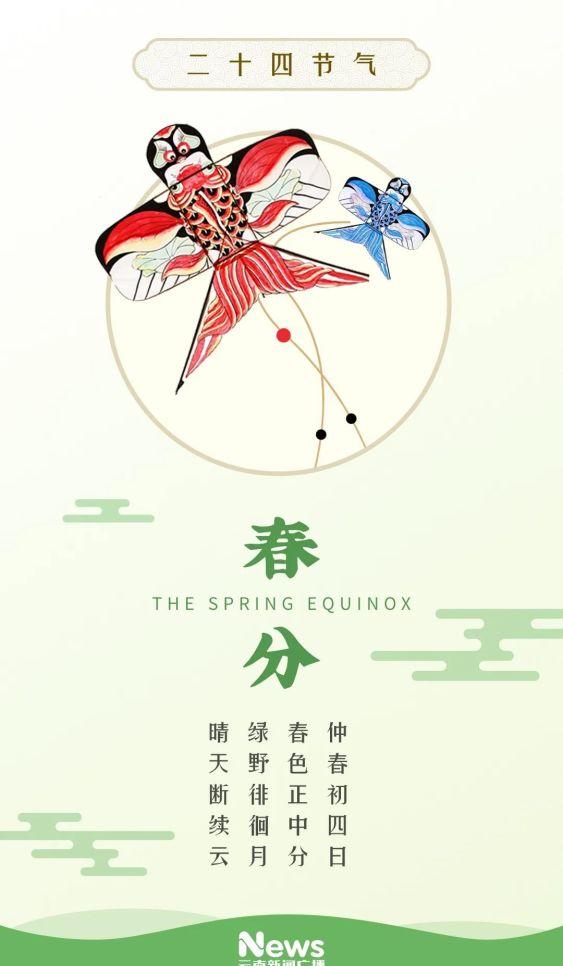
●
If we were in the same place, waiting for every sunrise, then two of those two days of the year, and only those two days, the earliest rays of sunlight would appear in the same place. These two days are the spring equinox and the autumn equinox.
The Book of Shang is the earliest surviving history book on the mainland. According to the Shangshu Yaodian, Emperor Yao ordered his astronomers Xi and Heshi to observe the sun, moon, and stars and pass on the seasons to the people. Observing that the length of day and night is equal, and in the evening the seven houses of the southern Suzaku have appeared, and it can be determined that "mid-spring". The "mid-spring" recorded in the Book of Shang is the spring equinox. "It is the destiny of Xi He, the heavens of Qin Ruohao, the calendar is like the sun, the moon, and the stars, and when it is given to man... Japan, Star Birds, yin zhongchun" (Shang Shu Yao Dian)
In 2003, He Yi, an archaeologist at the Chinese Academy of Social Sciences, was excavating the tao temple site in Xiangfen County, Shanxi Province. The ruins of the Tao Temple are the capital city of the Yao Emperor that experts and scholars have guessed. Dr. Wu Jiabi, an expert in the history of science and technology, made a further conjecture: If this is really the capital of Emperor Yao, then there should be an ancient observatory here. Because the YaoDian that records the deeds of Emperor Yao, more than half of the content is about astronomy.
He Si found thirteen rectangular rammed earth foundations arranged in a regular manner at the site of Tao Temple, and with the help of Dr. Wu Jiabi's team of astronomers, the archaeological team restored the observatory more than 4,300 years ago and made a year-long simulation observation...
In the Tao Temple Ancient Observatory, during the year, when the first rays of sunlight in the morning appear in the second observation seam, it is the direct sun hitting the Tropic of Cancer, the shortest winter solstice in the northern hemisphere; the seventh observation gap corresponds to the direct sun shooting at the equator, the spring equinox and autumn equinox of the middle equinox; the twelfth observation seam corresponds to the direct sun Tropic of Cancer, the longest summer solstice of the day...
The discovery of the ancient observatory at the site of the Tao Temple confirms the record in the Book of Shang that the Spring Equinox, Autumn Equinox, Summer Solstice, and Winter Solstice were determined during the Reign of Emperor Yao.
Tread on the sand line
Ouyang Xiu (Song Dynasty)
Rainy scenery,
Vernal equinox weather.
A thousand flowers and a hundred flowers compete for the bright.
Painting Liang Xinyan a pair of pairs...
The key feature of the winter and summer solstices is "most", and the key feature of the vernal and autumn equinoxes is "points". "The spring equinox is also half of yin and yang, so the day and night are equal and the cold and summer are flat." (Han Dong Zhongshu,"Spring and Autumn Dew: Yin and Yang In and Out"). Many countries use the day of the equal division of day and night as the beginning of spring, and countries such as Iran and Afghanistan even set it as the beginning of the new year.
The three phenology of the spring equinox are "One Hou Xuan Bird Solstice", the farmer's insect catching helper Swallow returned to work on time after taking a long vacation, "Second Waiting For Lei Naifa" and "Three Waiting for the First Electricity", and nature's percussion musicians and lighting engineers also returned to work. For the people of Kunming, around the spring equinox is also a day for red-billed gulls to do goodbye.
The traditional folk celebrations of the spring equinox are rich and colorful. The spring equinox sacrifice of the sun is an important national celebration originating from the Zhou Dynasty. The Temple of the Sun in Beijing was where the emperor held a ceremony during the Ming and Qing dynasties. There are also "standing eggs", "eating spring vegetables", flying kites, which are still passed down in the folk... In the bright spring light, people are busy farming and enjoying life...
References and audio sources:
Song Yingjie's "Twenty-Four Festivals"
Feng Shi's Ancient Astronomical Archaeology
Qu Wanli's "Shang Shu Jin Annotated Translation"
CCTV "The Capital of Yao Shun"
CCTV "China in the Classics - Shang Shu"
Yangguang "Reading and Appreciation"
Source: Yunguang reporter Jiang Tao
Editor: Cao Translation Luo Duanyang
Editor-in-Charge: Guan Xin Ruan Aili
Note: The copyright belongs to the original author, if there is infringement, please contact us to delete